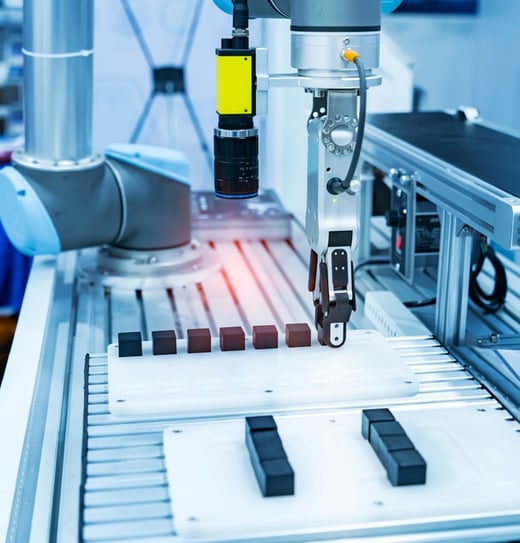
Automated scratch detection inspection for a precision helium leak sensor
42 Technology and INFICON AG – one of the world’s leading industrial sensor companies – have worked together on a new automated inspection technology that can reliably detect all scratches of more than 10 microns in width on polished glass surfaces in under one second.
![]()
The new scratch detection technology is being used by INFICON to partly automate a critical quality control task involved in the production of helium leak detection sensors. It will help to make the current manual inspection process used for glass sensor components easier, faster and less tiring for the manufacturing technicians involved. The system will also help INFICON to further improve product quality, as well as boosting its manufacturing efficiency and production capacity.
42 Technology has developed a very practical and easy-to-use inspection tool that will help INFICON’s manufacturing team to more clearly identify scratches, and to decide whether to pass specific glass components into the next stage of production. The new system will also be invaluable as part of our continuous process improvement programme.
42 Technology’s new visual inspection system uses a specific alignment of the component being tested, collimated light, optics and a camera to illuminate and capture high contrast images of minor defects on its glass surface. Unless these defects are identified early enough, they can lead to sealing issues later on when a silicon-based sensor is subsequently bonded to the glass. The resulting captured images are automatically processed and displayed on screen to the operator, with scratches circled in yellow and any other areas of potential concern highlighted in red.
42 Technology faced two particular challenges when developing the new visual inspection system: firstly, finding a better way to identify defects on the glass bonding surface because just improving the image would not improve the resolution; and secondly, how best to analyse the resulting complex images.
![]()
42 Technology’s role included initial development of a microscopy-based technology, first proposed by INFICON, before recommending the use of collimated light to improve image contrast. The consultancy team then designed and built a demonstration unit, developed the system and image analysis software, and developed and commissioned the final system which has now been integrated onto INFICON’s production line.
In this case the visual inspection technology developed by 42 Technology is being used during electronics manufacturing but a similar approach could easily be applied to other major sectors such as automotive. For example: to identify scratches on pistons or other engine components, or to inspect polished or metallic surfaces where it is often difficult for operators to assess their final finish.
Find out more by contacting us:
answers@42T.com | +44 (0)1480 302700
Related Articles

Sustainability, Industrial
Construction product innovation driven by product journey


Industrial
Unlocking process control using vision and measurement sensors

What will you ask us today?
We believe in asking the right questions to drive innovation; when we know the right questions, we generate the ideas to answer them.

